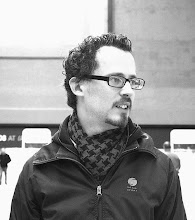Synthetic Sustainability - Bio Farm, Turin
(Biological systems research facility)
Research topic : observation of synthetic biology and living technologies as a way of optimizing biological systems and improving a more sustainable architecture.
Formal intent : examining mutational and evolutionary change in plants to generate morphological and emergent structures that underpin natural processes to generate an architectural form. Concentrating on the morphological outcomes which are being used to generate more sustainable architectures by way of drawing inspiration from biological techniques.
Scheme : A proposal for a biotech centre containing a biofuel production facility exploring new ways of breeding strains of algae to produce a sustainable biofuel which can be employed into the depleting fossil fuel market. The overall scheme concept is that the centre will be self sustainable by way of producing its own energy, recycling waste so as not to contaminate surrounding water supplies and technologically exacerbate natural resources by way of mechanical, robotic components throughout. Thus creating a predominantly robotically controlled environment agriculture to create a sterile buffer.
Friday, July 3, 2009
The Digial Organism - Rapid regeneration (generic)
 Digital species - hyperbodied cell strucure : internal assemblage of the necessary mechanics [infusing of the high-tech]
Digital species - hyperbodied cell strucure : internal assemblage of the necessary mechanics [infusing of the high-tech]info : natural movement of genes between species, often called horizontal gene transfer or lateral gene transfer can occur because of gene transfer mediated by natural processes. The gene movement between species has been widely detected during genetic investigation of various natural mobile genetic elements, such as transposons and retrotransposons that naturally translocate to new sites in a genome and often move to new species over an evolutionary time scale. There are many types of natural mobile DNA's which have been detected abundantly in crop foods such as rice. Production of transgenic plants in wide-crosses by plant breeders has been a vital aspect of conventional plant breeding for about half a century. Without it, security of our food supply against losses caused by crop pests. The first historically recorded interspecies transgenic cereal hybrid was between wheatr and rye.
Hybrid growth explorations
 Ivy hybrid machine - intelliegent ivy transfer system
Ivy hybrid machine - intelliegent ivy transfer system[specific growth rate via intelligent systems robotics]
 Incubate - growth controller : adaptive + sequential germinating devices [robotically programmed to maintain lush artificial vegetation]
Incubate - growth controller : adaptive + sequential germinating devices [robotically programmed to maintain lush artificial vegetation]info : in biology, mutations are changes to the nucleotide sequence of the genetic material of an organism. Mutations can be caused by copying errors in the genetic material during cell division, by exposure to ultraviolet or ionizing radiation, chemical mutagens, or viruses, or can occur deliberately under cellular control during processes such as hypermutation.
In multicellular organisms, mutations can be subdivided into germ like mutations, which can be passed onto descendants and somatic mutations, which are not transmitted to descendants in animals. Plants sometimes can transmit somatic mutations to their decendants asexually or sexually. Mutations create variation within the gene pool. Less favourable mutations can be reduced in frequency in the gene pool by natural selection, while more favourible mutations may accumulate and ressult in adaptive evolutionary changes.
Although many mutations are deleterious, mutations may have a positive effect given certain selective pressures in a polutation.
In multicellular organisms, mutations can be subdivided into germ like mutations, which can be passed onto descendants and somatic mutations, which are not transmitted to descendants in animals. Plants sometimes can transmit somatic mutations to their decendants asexually or sexually. Mutations create variation within the gene pool. Less favourable mutations can be reduced in frequency in the gene pool by natural selection, while more favourible mutations may accumulate and ressult in adaptive evolutionary changes.
Although many mutations are deleterious, mutations may have a positive effect given certain selective pressures in a polutation.
Synthetic Robotics
 Process - growth control : a recorded stage of the bio-scaffold process taking effect
Process - growth control : a recorded stage of the bio-scaffold process taking effect[artificially intelligent robotically programmed to maintain/increase synthetic growth] (1)
 Nutrient intent - soft system : pliant adaptive parts that are responsive and evolve
Nutrient intent - soft system : pliant adaptive parts that are responsive and evolve[specific mechanisms help maintain its health + internal growth status] (1)
 Build ONE - genetically controlled creation : the non-human build [livable pumping, waste transfer, nutrient provision, structural load transfers + bio-synthetic harvestation]
Build ONE - genetically controlled creation : the non-human build [livable pumping, waste transfer, nutrient provision, structural load transfers + bio-synthetic harvestation]
Subscribe to:
Comments (Atom)




















































